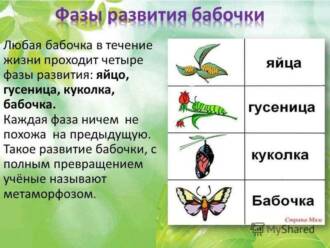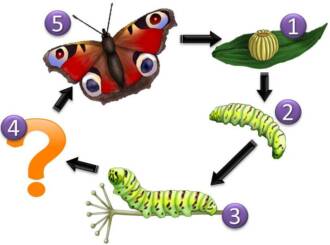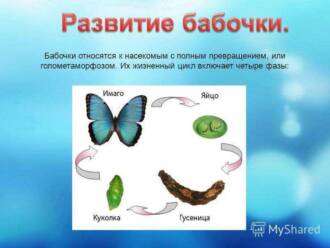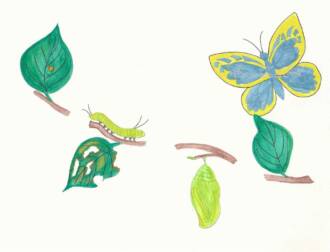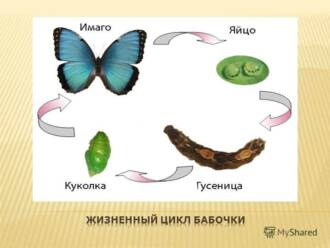
Butterflies are amazing creatures that go through a complex life cycle consisting of several stages of development. Starting as an egg, they go through the caterpillar stage and the chrysalis before turning into a colorful and delicate butterfly.
The life cycle of a butterfly begins with the laying of eggs on plants that will become food for the caterpillars. The eggs can come in different sizes and shapes, depending on the species of butterfly. The eggs hatch into caterpillars, active and appetizing creatures that feed continuously on plants to gain enough nutrients before the next stage.
After that, the caterpillar turns into a chrysalis, forming a protective cocoon or scaly cover, inside which amazing transformations take place. Inside the chrysalis, new organs, wings and the delicate appearance of a butterfly begin to form. This stage is called metamorphosis and is one of the most amazing natural phenomena.
Finally, the moment comes when the chrysalis splits, and an adult butterfly flies out of it. At first she is feeble and weak, but gradually unfolds her wings and learns to fly. The butterfly spends the rest of its life, which can last from a few days to several weeks, exploring the world and looking for a breeding partner.
Thus, the life cycle of a butterfly is an amazing journey from an egg to an adult. Each stage of development has its own characteristics and importance for the overall development cycle of a butterfly. Studying these stages allows us to understand and appreciate the beauty and uniqueness of butterflies, as well as their important role in the ecosystem of our planet.
Butterfly life cycle
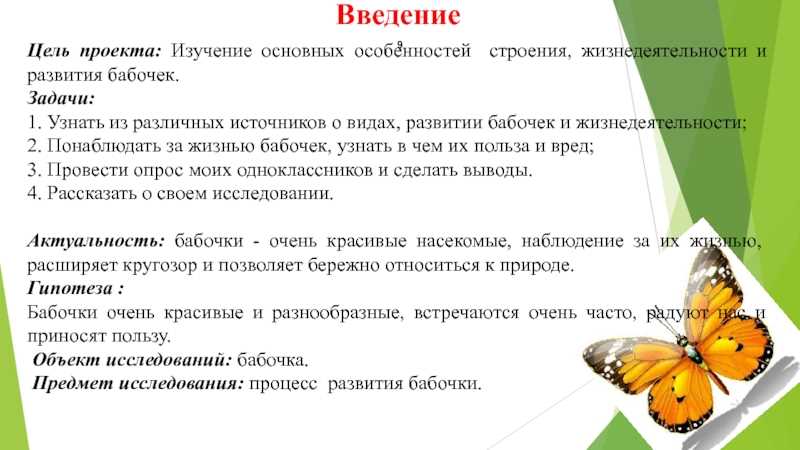
Butterflies go through several stages of development that make up their life cycle. This butterfly development cycle includes several phases: from eggs to caterpillar, from caterpillar to chrysalis, and finally from chrysalis to butterfly.
At the beginning of its life, a butterfly lays its eggs on plants. These eggs can be of different sizes and shapes, depending on the type of butterfly. When the eggs hatch, caterpillars appear - the first stage of butterfly development. Caterpillars actively feed on plants and grow rapidly, periodically breaking through their skin to increase their size.
After the caterpillar reaches a certain size, it turns into a chrysalis. At this stage in the development of the butterfly, the caterpillar closes itself in its protective cocoon or hangs on the plant, turning into a shapeless creature. Inside the chrysalis, the caterpillar undergoes a metamorphosis, turning into a beautiful butterfly.
When the process of metamorphosis is completed, the butterfly hatches from the chrysalis and begins its life. An adult butterfly has wings that allow it to fly and reproduce. She is looking for food and a breeding partner. The life of a butterfly can last from several days to several months, depending on the species.
Thus, the life cycle of a butterfly includes stages such as eggs, caterpillar, chrysalis, and finally the butterfly. Each of these stages is important and surprising, and each of them plays a role in the development of a butterfly.
Butterfly egg: features and development
A butterfly egg is the first stage in the life cycle of a butterfly. Butterfly eggs vary in shape, size, and color depending on the species. They are usually small, round or oval, and may be multicolored or clear.
How a butterfly develops: After the female lays eggs on suitable food plants, they go through several stages of development. The egg hatches into a caterpillar, which begins to actively feed and grow. The caterpillar is the second stage of butterfly development.
The butterfly's development continues, and the caterpillar goes through several molts to increase its size. Eventually, the caterpillar enters the third stage of development, the pupa. The pupa can come in many shapes and colors, but it usually has a protective shell that helps it survive this stage.
Inside the pupa, the caterpillar transforms into an adult butterfly. This is the process of metamorphosis, as a result of which significant changes occur in the appearance and organs of the butterfly. After this process is completed, the butterfly flies out of the chrysalis and begins its life as an adult.
Butterflies stages of development is an amazing process that allows them to undergo significant changes from egg to adult. The life cycle of a butterfly can be different for different species, but they all go through the stages of egg, caterpillar, pupa and butterfly. Each stage has its own characteristics and is important for the full development of the butterfly.
Butterfly caterpillar: active growth stage

The caterpillar is one of the stages in the life cycle of a butterfly and represents the stage of active growth. After the butterfly eggs hatch, hungry and energetic caterpillars emerge from them. Caterpillars actively feed in order to gain enough food for their further development.
Butterfly caterpillars differ from adults in their body shape. They have a soft body made up of segments that allow them to move flexibly and get into tight spaces. Caterpillars have powerful jaws that help them break down and eat plant foods.
Caterpillars go through several developmental stages called instars. During each instar, the caterpillar grows and threshes its skin. This process is called molting. After each molt, the caterpillar gets bigger and gets new skin that allows it to keep growing.
Butterfly caterpillars are constantly looking for food throughout their lives. They feed on plants, leaves and shoots. Some caterpillars are polyphagous and can feed on a variety of plant species, while others prefer certain species.
The caterpillar stage is an important stage in the development of a butterfly. During this stage, the caterpillar actively grows and gains strength before turning into a chrysalis and beginning its last stage of development before turning into a butterfly.
Butterfly cocoon: transformation and rest
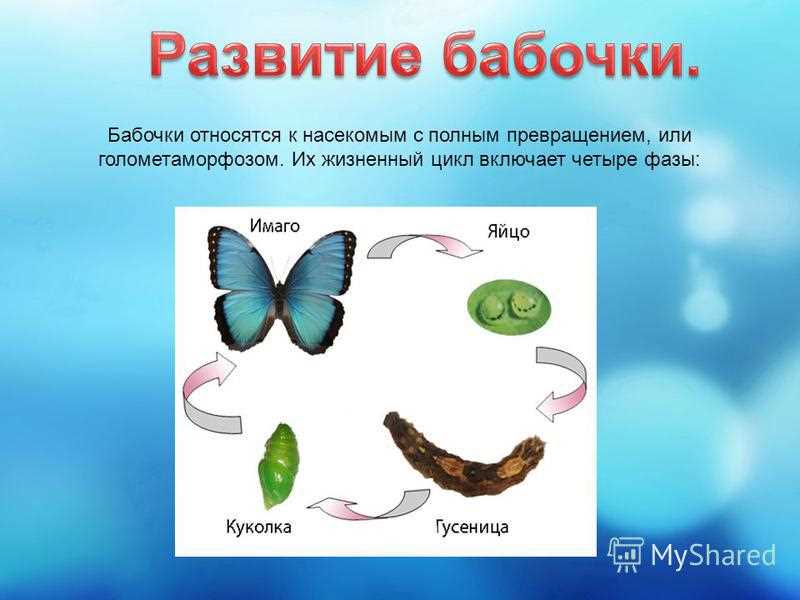
The cocoon is one of the key stages in the development of butterflies. After the caterpillar has passed all the previous stages of development, it proceeds to create a cocoon, which will become its refuge during the transformation. A cocoon is a special structure that provides the caterpillar with safety and protection during its transformation into a chrysalis.
When the caterpillar finishes spinning the cocoon, it turns into a chrysalis. The pupa is the resting stage of the butterfly's development, during which important internal transformations take place. Inside the chrysalis, changes occur in the structure of the caterpillar's body, its organs and tissues, so that they can adapt to a new life as a butterfly.
The time a caterpillar spends in a cocoon as a chrysalis can vary depending on the butterfly species. Some pupae stay in the cocoon for only a few days, while others may remain in it for several weeks or even months. During this time, the pupa is at rest, not showing any activity.
After the chrysalis has completed its development inside the cocoon, it is ready to emerge into the world as an adult butterfly. Usually, before leaving, the chrysalis makes a small hole in the cocoon, through which it will crawl out. When a butterfly emerges from its cocoon, it must go through another stage of development - the spreading and drying of its wings. After that, the butterfly becomes completely ready to fly and begins its new life as a beautiful and independent creature of nature.
Butterfly chrysalis: transformation stage
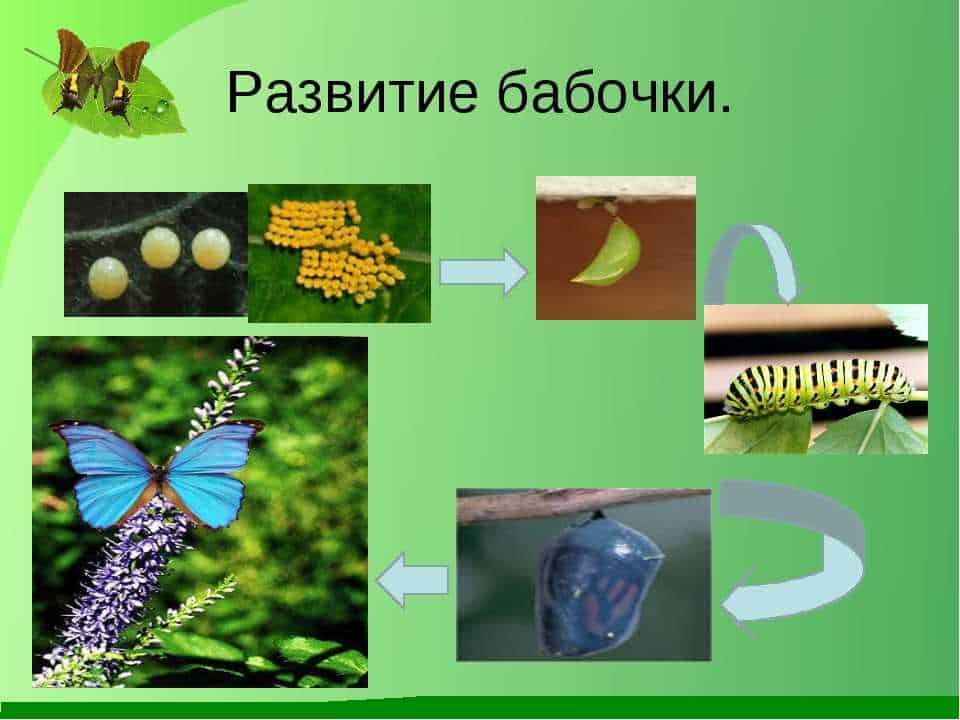
Butterflies go through several stages of development, known as a life cycle. One of the most fascinating stages of butterfly development is the chrysalis stage. As the caterpillar turns into a chrysalis, an amazing transformation occurs.
When the caterpillar reaches full maturity, it begins to search for a place to create its chrysalis. She can choose a leaf or branch where it is safe to hide. The caterpillar creates its own chrysalis using its own body. It exudes a silk material that firmly attaches to the backing and forms a chrysalis bowl inside.
When the chrysalis is ready, the caterpillar transforms inside it. Amazing changes take place inside the chrysalis. The tissues of the caterpillar decay and new tissues begin to form. In the process of butterfly development, all organs and structures are transformed. Outwardly, the chrysalis looks calm and motionless, but inside there is a lot of work going on.
After a few weeks, depending on the type of butterfly, the pupa opens and an adult butterfly flies out of it. This is the moment when the long-awaited transformation is completed and the butterfly begins its new life. She spreads her wings so that they can be dried, and then prepares to fly and explore the world around her.
Adult butterfly: appearance and flight
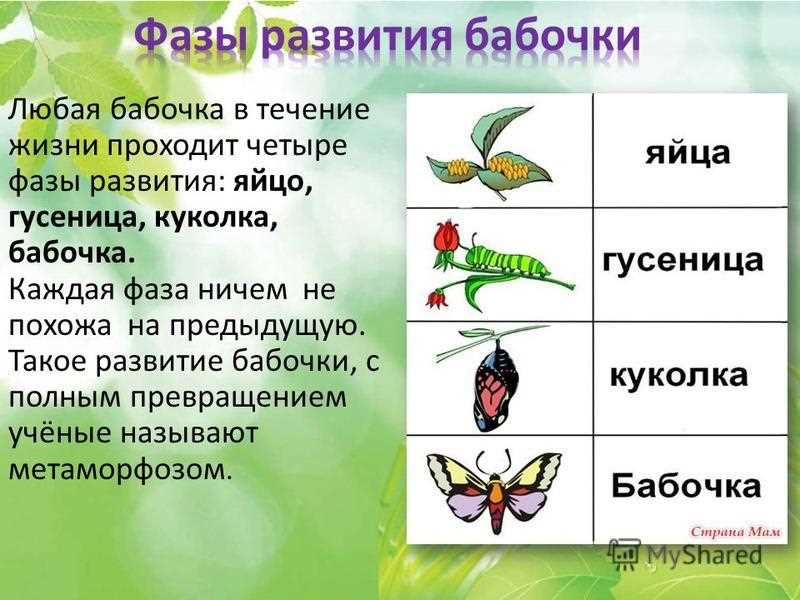
The adult butterfly is the final stage of butterfly development and represents the culmination of the life cycle. After going through several stages of development – from egg to caterpillar and then to pupa – the butterfly is ready for its final transformation.
When the chrysalis reaches a certain stage of maturity, it begins to transform into an adult butterfly. Complex processes take place inside the pupa, as a result of which wings, legs, head and other organs are formed. After this process is completed, the chrysalis turns into a butterfly.
When the butterfly is fully formed, it is ready for its first flight. She unfolds her wings, which were previously folded along the body, and begins to wave them to gain speed. She then breaks away from her support and launches herself into the air.
The flight of a butterfly is one of the most amazing aspects of its life. Butterflies can fly long distances using their wings, which are covered with small scales. These scales give the wings a bright and colorful look and also help the butterfly to fly more efficiently.
Butterfly nutrition: features and preferences
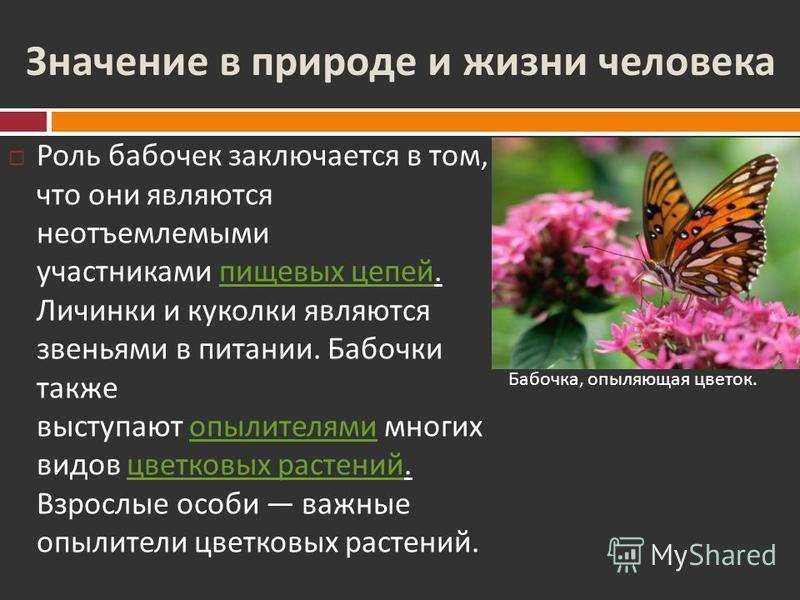
The development of a butterfly goes through several stages, and each stage has its own characteristics in nutrition. The butterfly development cycle begins with eggs, which the female lays on plants on which the caterpillars will feed. When the caterpillars hatch, they immediately begin to feed on the leaves of this plant. Caterpillars are the most active and appetizing stage of a butterfly's life cycle. They constantly feed and grow, passing through several molts, while eating more and more vegetation.
When the caterpillar reaches a certain size, it stops feeding and enters the pupal stage. At this time, it is fixed on the surface and forms a cocoon in which the transformation from a caterpillar into a butterfly takes place. Inside the chrysalis, the butterfly does not feed and is completely dependent on the food reserves accumulated in the caterpillar.
After a certain time, when the transformation process is completed, the butterfly leaves the chrysalis. At this point, she already has fully formed wings, but her stomach is not yet ready for digestion. For the first few hours after emerging from the chrysalis, the butterfly simply rests and dries its wings. Gradually, her stomach begins to function, and she can begin to feed.
The main source of nutrition for butterflies is the nectar of flowers. Butterflies use their long stigmas to reach the nectar inside the flower and drink it. In addition to nectar, some species of butterflies can also feed on fruit juices, rotten fruit juices, or even the nectar of plants that are not flowers. However, the main food source is still the nectar of the flowers, and butterflies usually select flowers that are of the appropriate shape and size so that they can reach the nectar.
The influence of the environment on the development of butterflies
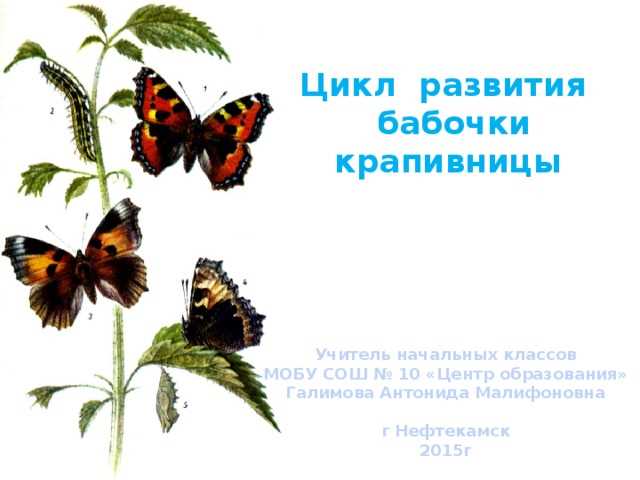
The life cycle of a butterfly goes through several stages of development, starting with eggs and ending with full-fledged winged individuals. Each stage of butterfly development has its own characteristics and depends on environmental conditions.
Butterfly eggs are the first stage of development. They are deposited on suitable plants or other surfaces and are very fragile. The environment plays an important role in the survival of eggs, as they can be consumed by predators or die due to adverse conditions.
After hatching from the eggs, the caterpillar becomes the next stage in the development of the butterfly. The caterpillar actively feeds and grows until it reaches a sufficient size to move on to the next stage. The environment, including the availability of food and the availability of shelters, can influence the speed and success of caterpillar development.
The pupa is the third stage of butterfly development. The caterpillar attaches itself to a suitable surface and forms a cocoon or scaly shell in which the transformation takes place. During this time, the environment must be calm and protected to prevent damage to the cocoon and ensure the safe development of the pupa.
Once the butterfly is fully formed inside the chrysalis, it emerges into the light. Opening the cocoon and unfurling the wings is the final stage of butterfly development. The environment must be suitable for flight and foraging, as the butterfly depends on the availability of nectar and the presence of plants for reproduction.
Thus, the environment has a significant impact on the development of a butterfly at every stage of its life cycle. Providing suitable conditions such as access to food, hiding places and protection from predators is essential for the successful development and survival of butterflies.


